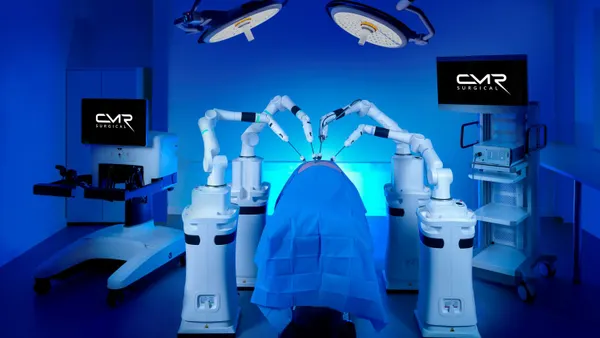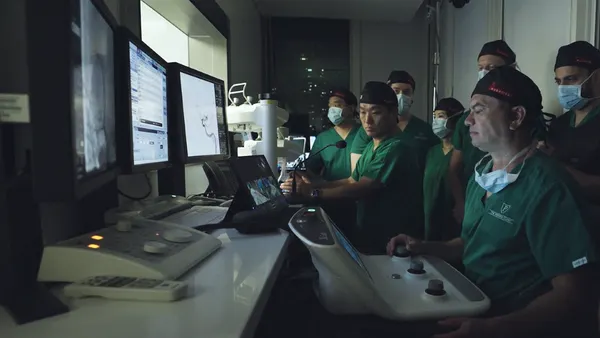Dive Brief:
- Scientists have placed a steerable catheter into the brains of sheep in a project intended to improve the diagnosis and treatment of disease, according to a paper published in PLOS ONE.
- The minimally invasive procedure delivered an implantable steerable needle that could be better at reaching the deep, delicate parts of the brain than existing rigid catheter technologies.
- Having shown they can implant the catheters without causing damage or infection, the Imperial College London researchers are aiming to use the platform in humans within four years.
Dive Insight:
Minimally invasive surgery improves on conventional surgical techniques by reducing trauma, shortening hospital stays and accelerating post-procedure recovery. However, the effectiveness of minimally invasive neurosurgery has been limited by the use of rigid catheters in applications including biopsy, laser ablation, drug delivery and fluid evacuation.
“If you want to get to a deep-seated site through a burr hole in the skull, you are constrained to a straight-line trajectory. The limitation of the rigid catheter is its accuracy within the shifting tissues of the brain, and the tissue deformation it can cause. We have now found that our steerable catheter can overcome most of these limitations,” Lorenzo Bello, study co-author and a professor at the University of Milan, said in a statement.
The catheter is inspired by the organs parasitic wasps use to lay eggs in tree bark. Echoing the wasp organ, the catheter has four interlocking segments that slide over one another. The design is intended to enable flexible navigation, the research found.
By mounting the modular robotic catheter driver onto a commercial neurosurgical robot, Renishaw’s neuromate, the scientists delivered the catheter into the brains of sheep. The system featured artificial intelligence that was designed to learn from the input the surgeons provided via the joystick and contact forces within brain tissues.













